ADAM Audio A7V review: A new standard for mid-size monitors?
The second largest monitor in the new, DSP-controlled A Series features room adaptation and meets the demanding listening needs of users, all without stretching the budget.
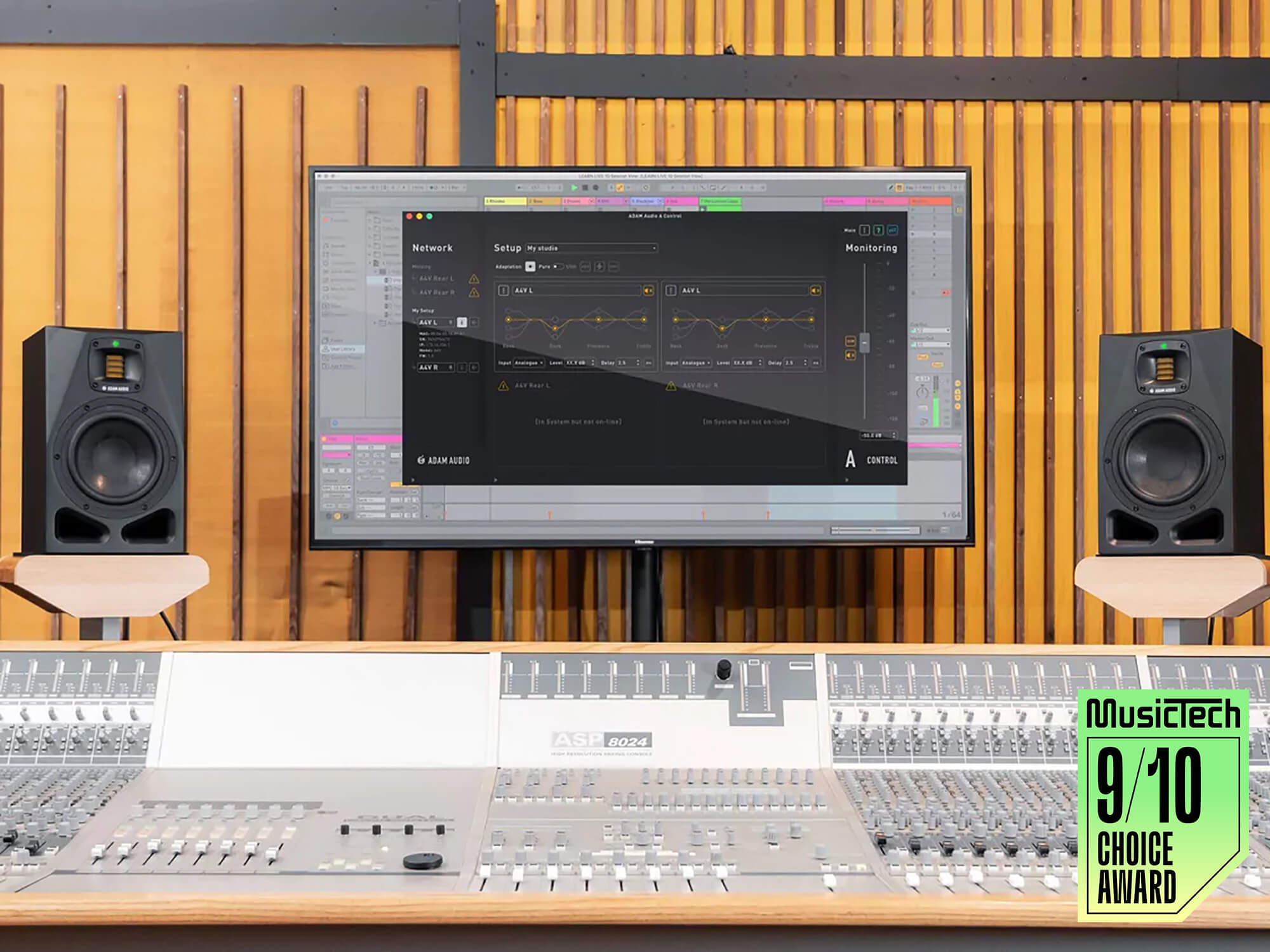
Review Overview
Our rating
9
Our verdict
⊕ A Control app allows room adaptation direct from the listening position
⊕ Sonarworks implementation without latency or CPU load
⊕ Serious value for money
⊖ For medium size or highly damped rooms, a larger, more powerful model may be preferable
ADAM Audio monitors have rapidly become a studio staple in recent years, for their sheer affordability and impressive performance. Our reviews of the Focusrite-owned company’s monitor selection have been quite favourable, often picking up Value awards and Editor’s Choice awards. With its new A Series, ADAM seeks to uphold its esteemed reputation among bedroom producers and studio owners.
The A Series starts small with the compact A4V monitor through to the three-way A8H. Two dual-woofer designs (A44H & A77H) flank the seven-inch A7V – which is on review here. The X-ART ribbon tweeter is from the A7 and A7X models – along with the PWM woofer amplifier and tapered upper corners – but the A7V’s signal path, control set and woofer are fully redesigned.
Its controls are now situated at the rear, the front panel bass reflex ports have changed shape and the woofer is a Multi-Layer Mineral inverted dome. Behind the woofer lies the most significant change; a 96kHz 24-bit DSP system providing room adaptation EQ and filtering with minimal phase shift.
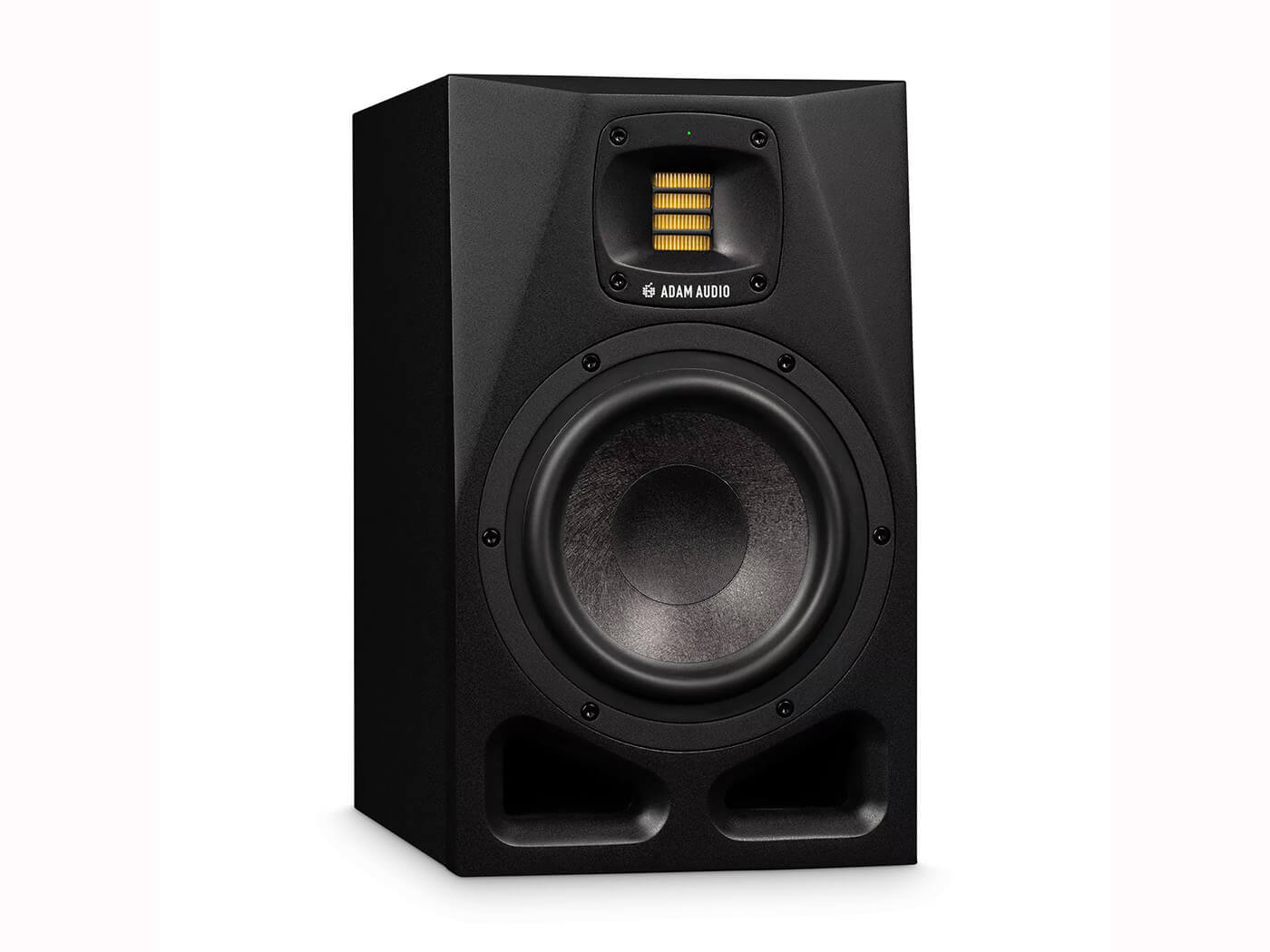
Adaptation
Having controls on the rear cleans up the front baffle for a sleeker design, especially given the shift from circular to triangular bass reflex ports. The inverted dome woofer may be shaped for acoustical reasons, but it adds to a neat, more unobtrusive image. The arrangement of the rear panel controls is equally well considered, with a row of four toggle buttons for the four-band room adaptation EQ. Between this and the lower analogue inputs sits a level trim, a Voicing button and an RJ-45 socket to open up the A7V’s remote control options.
There are three voicings: Pure, UNR and external. The former is a neutral/flat response, while UNR (Uniform Natural Response) brings a more inflated, studio ‘mains’ sound which can be useful for checking how a mix translates to systems with some enhancement EQ. Both of these options are affected by the room adaptation EQ, while the external option loads a response set by the remote control app, A Control – more of which to follow.
In a nod to the popular practice of mounting monitors horizontally, ADAM has created tweeters that can be unscrewed and rotated 90º to keep the redesigned waveguides oriented for optimal performance. If you require a shorter monitor or horizontally-aligned drivers, the new A44H has been designed to match the A7V performance in a low-profile, dual four-inch woofer configuration.
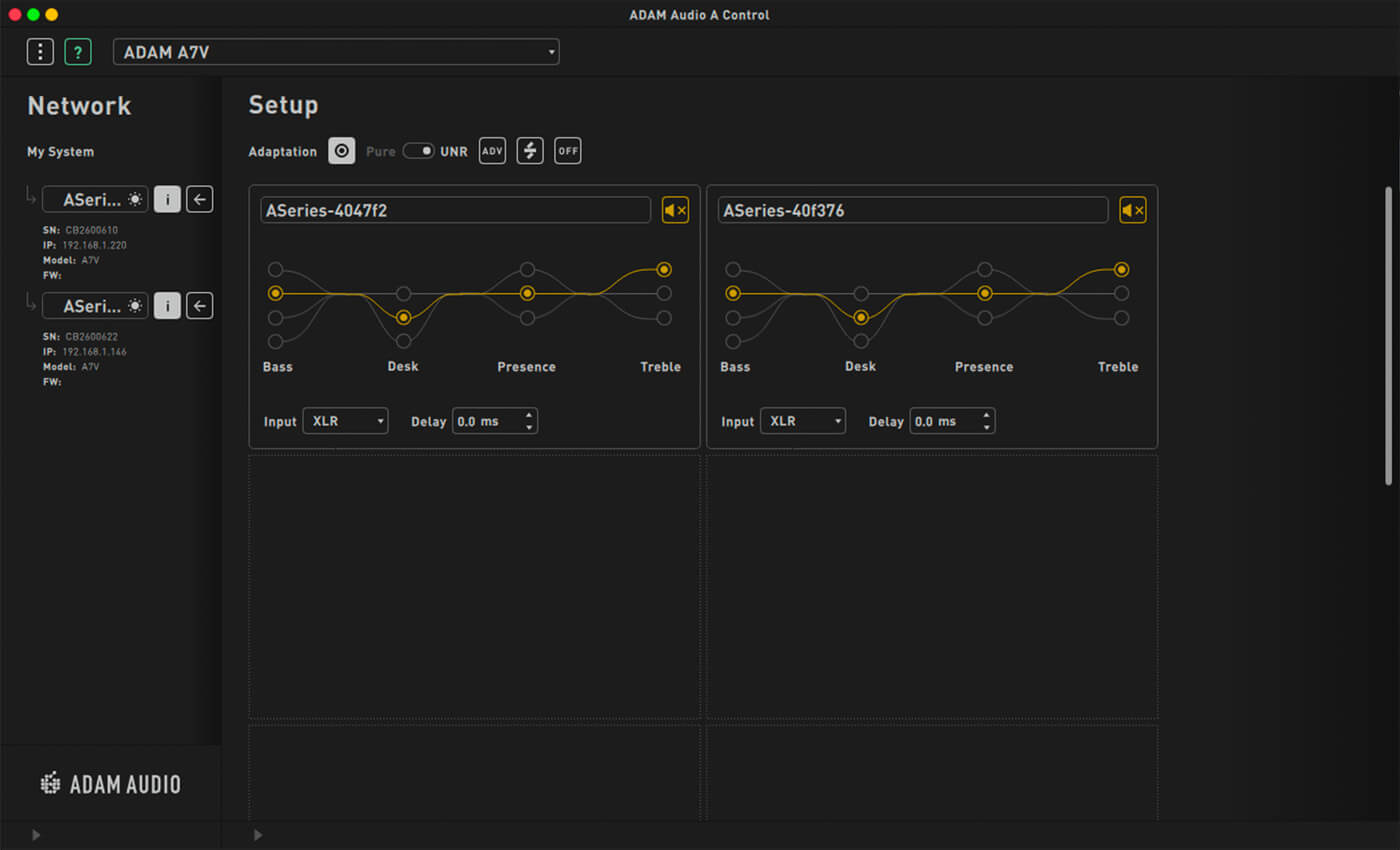
Trustworthy sonics
Without touching the voicing controls, the A7Vs boast a sound quality that reaches beyond the price tag. There is plenty of low-end extension for 808 bass lovers; it feels suitably flat in response and punchy in action. The transition from mids to high mids is smooth and the crossover (2.8kHz) appears to be a trouble-free zone. For those unfamiliar with ribbon tweeters, the high end can feel a little soft or withdrawn. The relatively small degree of phase shift compared to many dome tweeters in this price bracket makes the frequency response appear flatter, though it’s delivering an accurate representation of high-end tones and transients. A slight boost on the HF shelving filter can easily redress this if needed.
These are easy monitors to work on, immediately feeling trustworthy and the degree of voicing adjustment needed for most situations is small. Many monitors struggle to track the complex low-mid frequencies in a mix, making for a slightly muddied sound. A box-fresh A7V has a touch of this, but once the room adaptation controls are put to work, any problematic areas of the spectrum are easily identified and compensated for.
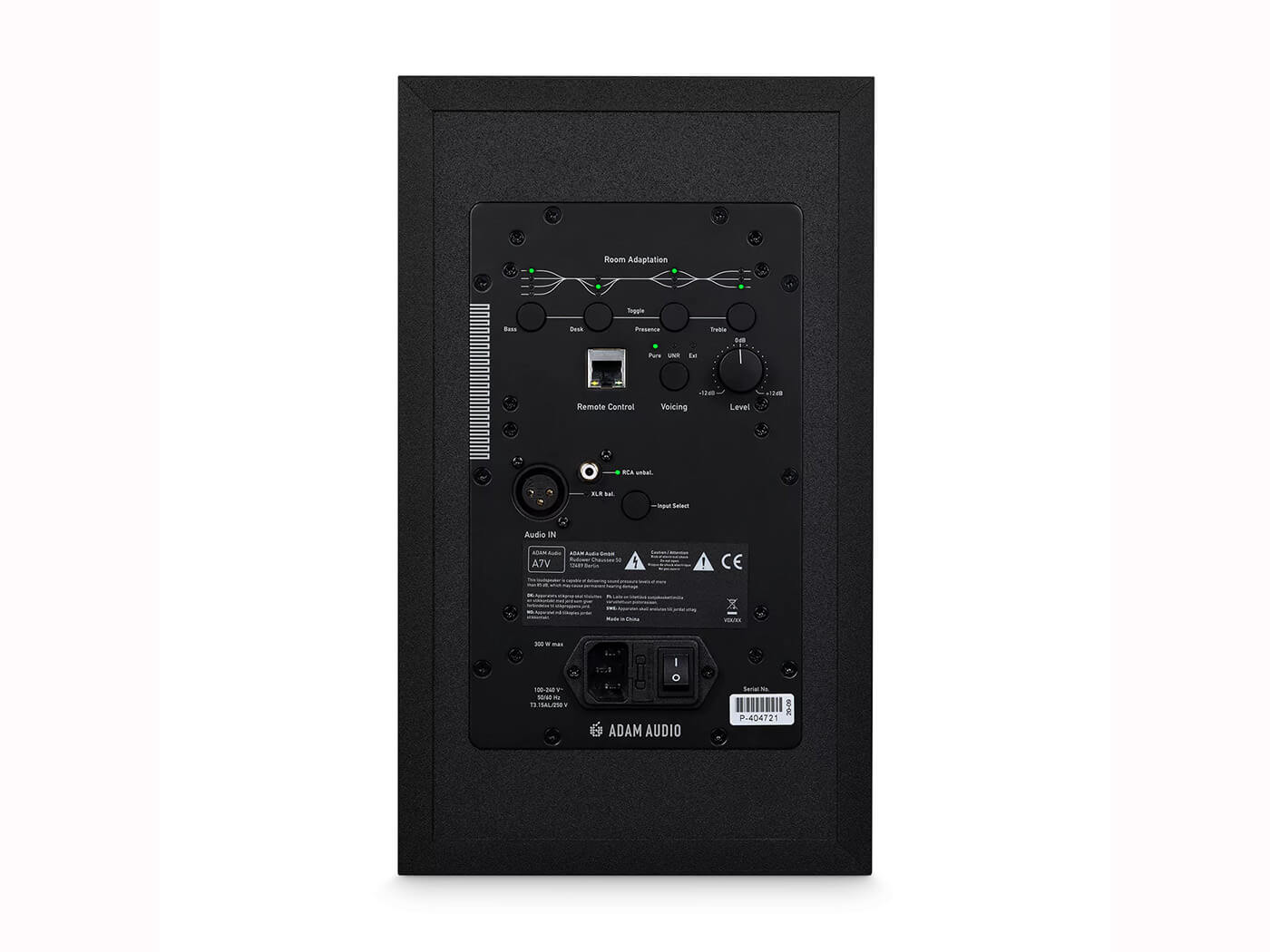
The balance of front baffle shaping, the bass reflex ports and the tweeter waveguide produce a crisp sound in the listening position with a solid, accurate stereo image. The stability of the frequency response and stereo field off-axis is equally solid, allowing for plenty of movement around the room without losing the essential sonic form.
Cranking them up, particularly with bass-heavy sources, highlights the limiting factor of the A7V; the power. There is easily enough for small rooms, and medium ones that are not overly damped, but if you require loudness fit for a producer/artist playback session, you’ll need a larger model. The level that triggers the protection LEDs is sensibly set at a threshold where no significant distortion is occurring, and unlike many nearfield monitors at this price, there is little harshness in the sensitive hearing regions even when pushed to this level.
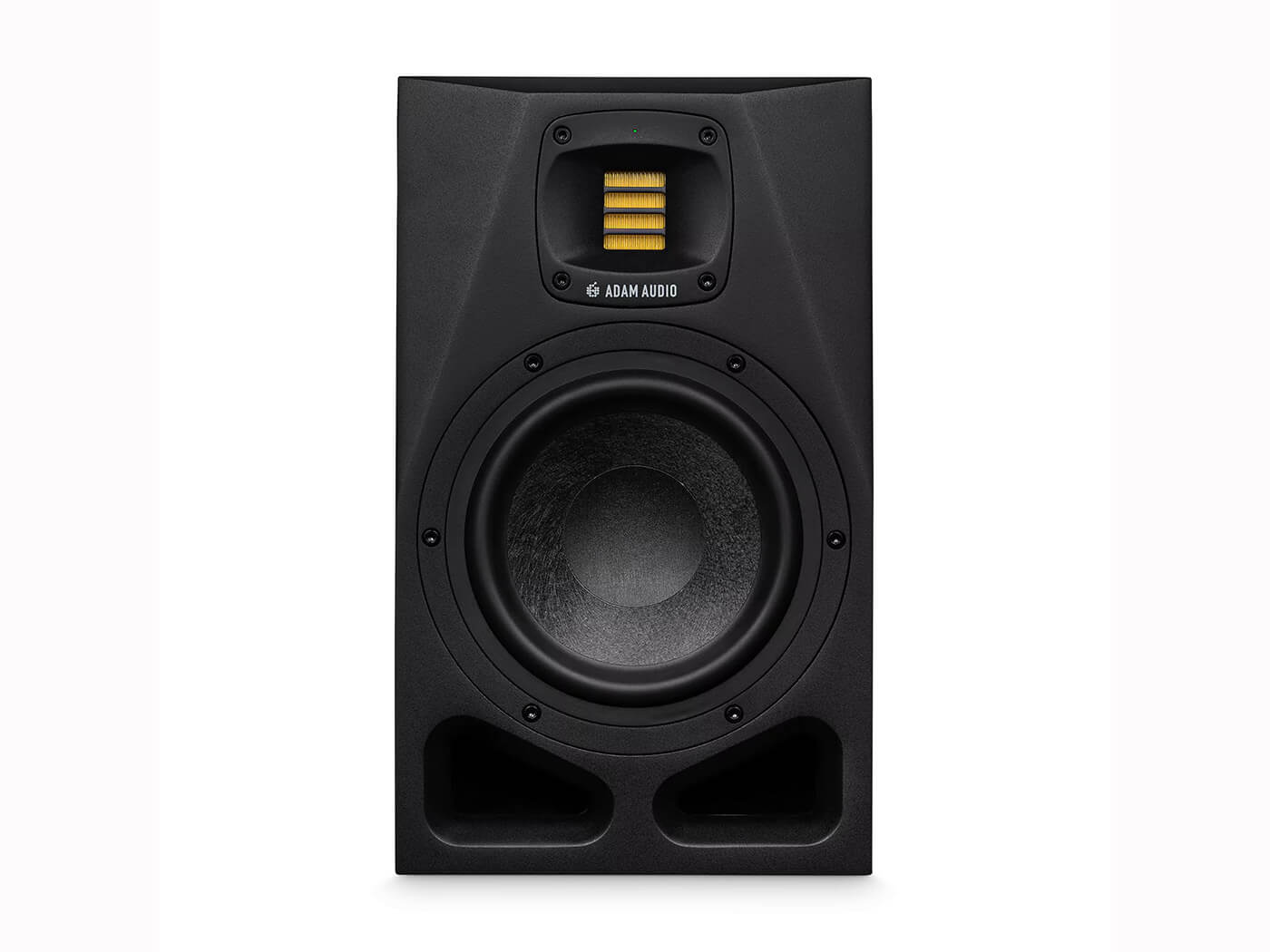
A Control
The base quality of the A7V is excellent but, with the addition of the A Control software, the whole package reaches another level of flexible utility. You can run the app from a wired or wireless host once the A7Vs are connected to an ethernet router/hub. A Control makes short work of finding the room EQ curve that best suits your listening position without having to leave it, while adding two more contouring modes. The Advanced mode provides a fully parametric, multimode six-band EQ for broad and surgical refinements. It’s quick to jump between Advanced and standard room adaptation profiles to A/B room responses or even programme material (almost like a second set of monitors), and setups can be stored and recalled within the software.
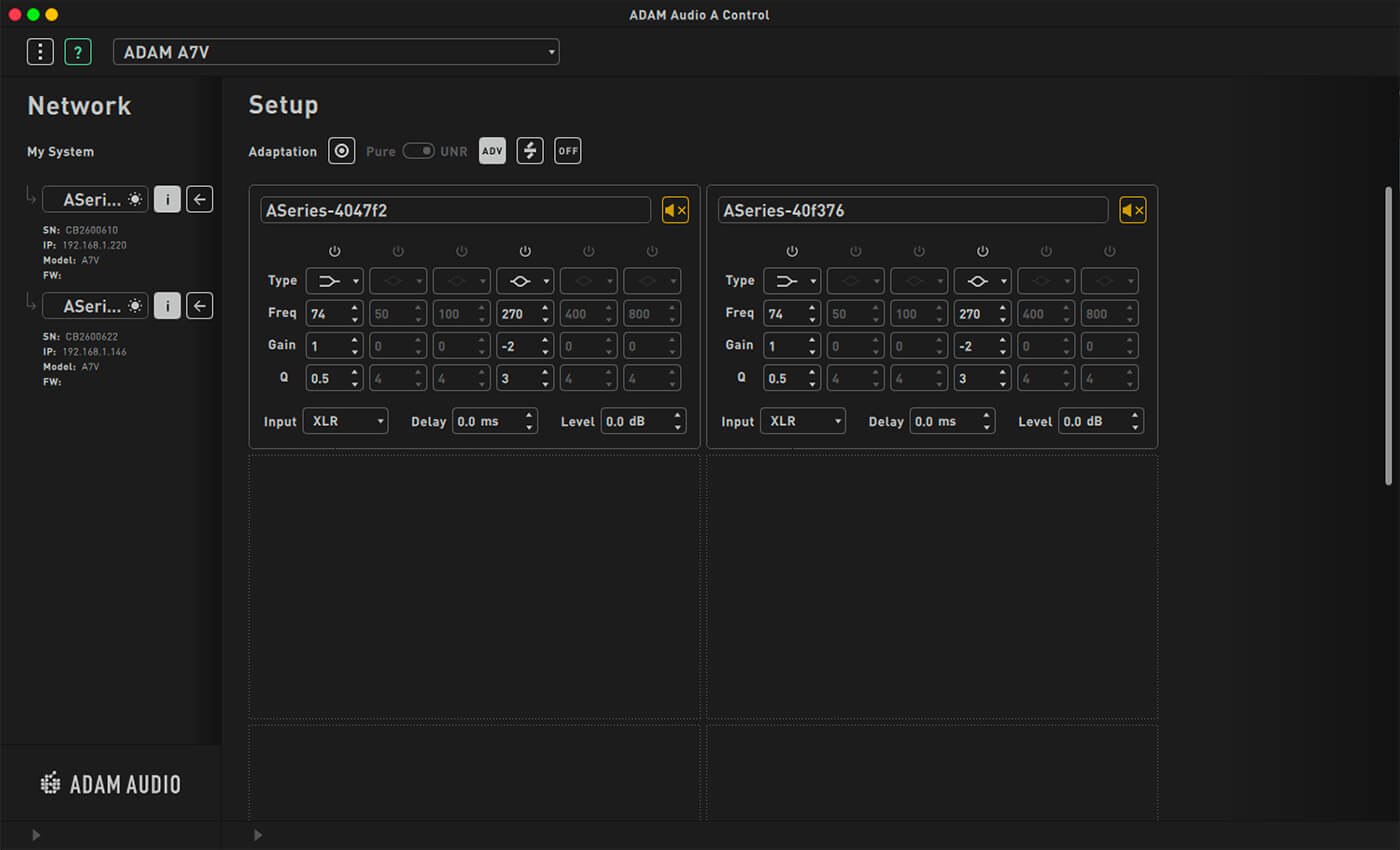
SoundID
Arguably the most noteworthy voicing option of the A7V is the integration of Sonarworks’ SoundID Reference. Frequency response and phase-shift correction plots created through SoundID Reference – preferably using a Sonarworks-calibrated measurement microphone – can be exported to A Control and loaded directly into the monitors. SoundID calibration can be quickly switched on/off or substituted for the other two voicing methods quickly for comparison. Although an A7V can only hold one SoundID plot at once, they can be stored on a computer and loaded whenever needed, for instance, if one moves room regularly (though care with placement will be paramount). The beauty of this integration is that the latency usually associated with SoundID is radically reduced when loaded into the A7V DSP, making near-realtime monitoring possible and offloading any CPU drain.
The A7V comes with a 60-day trial of SoundID Reference, after which it will cost €249 (or €299 with microphone) for a full licence. Making a profile within that time is easy, even with a non-Sonarworks measurement mic, and the resulting profiles can be stored for use without any need for a SoundID licence, but if the room or monitor position changes then a new calibration will be needed.
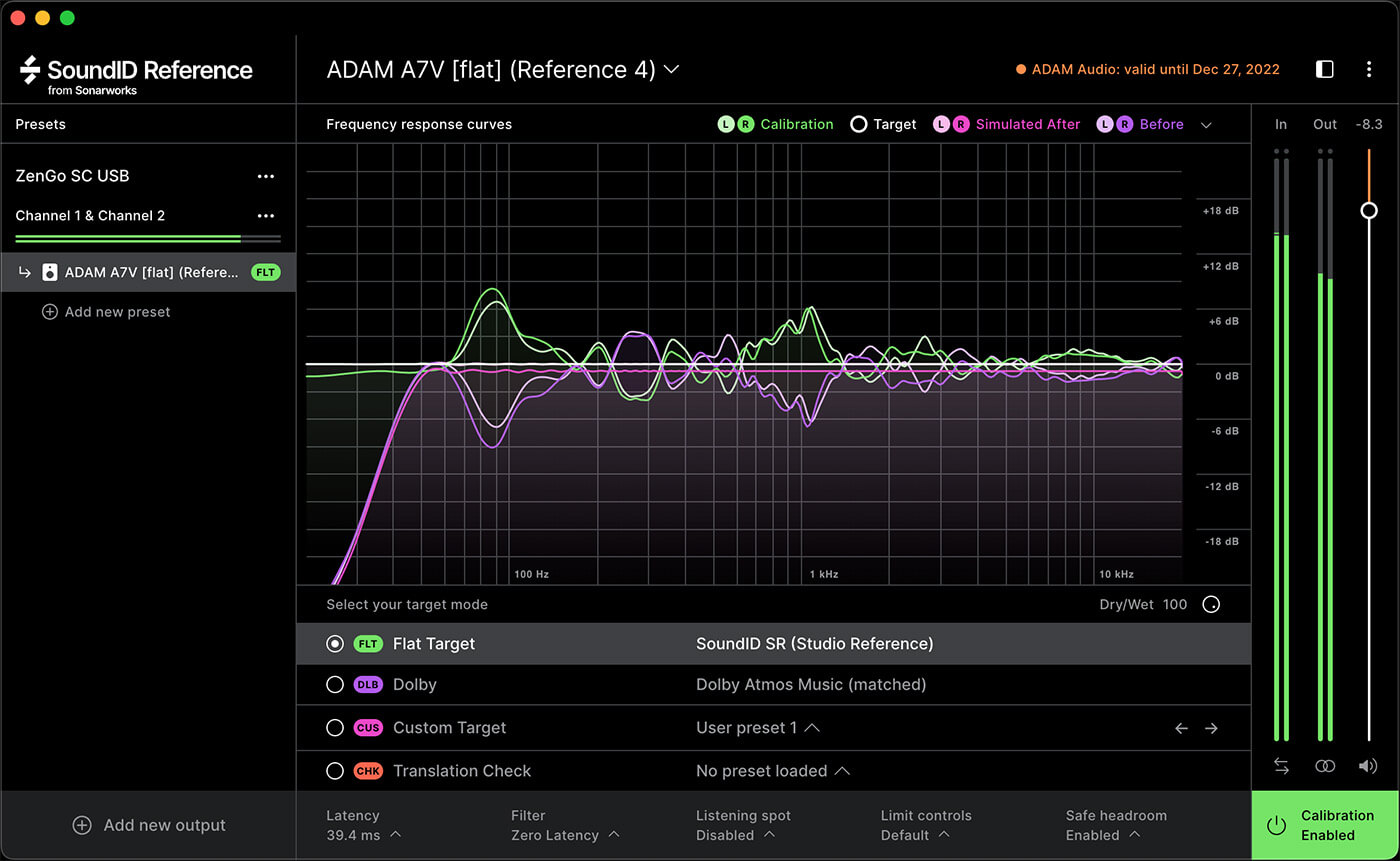
In practice, room adaptation voicing (Pure or UNR) is well-designed to make a substantial difference to how the A7V interacts with a room, while the Advanced functionality has more utility for those with more acoustician leanings. The sound of the A7Vs with the SoundID engaged is well worth the effort and opens up the source audio effortlessly. Pleasingly, the initial four-band EQ voicing used doesn’t fall all that far from the SoundID adjustment, but the latter is ultimately superior.
Now that AD/DA conversion is of a consistently high and affordable standard, the concept of using DSP within a monitor should not be treated with suspicion; in the case of any lingering doubts, experience of the ADAM A7V would put these to bed. For the price these are excellent monitors; with A Control they represent a serious challenge to monitor designs costing twice as much.
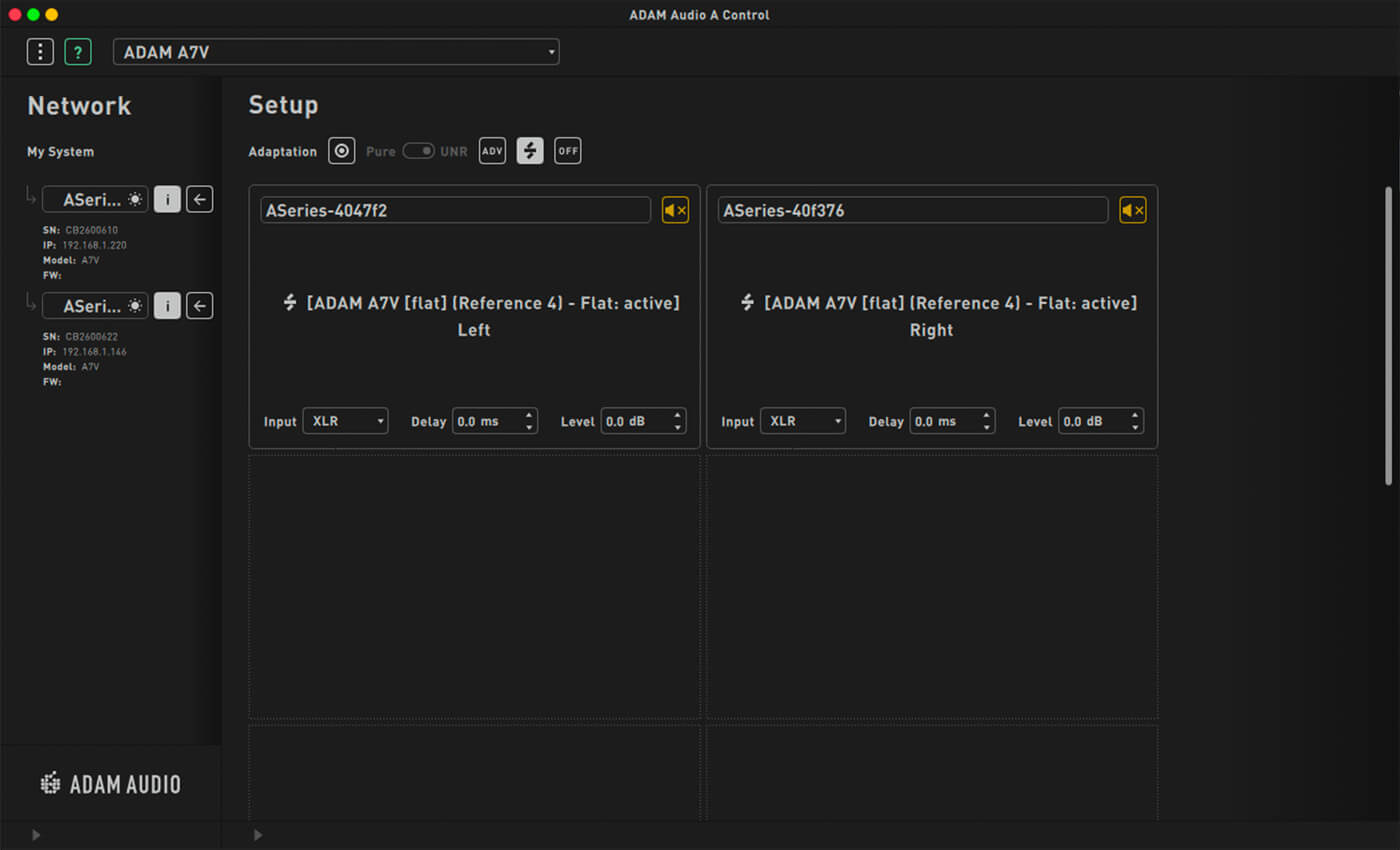
Reference tracks
To Build A Home – The Cinematic Orchestra (Ma Fleur)
All the atmosphere conjured by the up-close piano recording, the sustain pedal clunks, background noises and tape/preamp hiss is just as enveloping as it ought to be. The low-mid thickness of the piano and bone-dry vocal is an aural feast that benefits from the clarity provided by well-calibrated A7Vs. The bottom-end surprise of the double bass in the second verse loses nothing, even down to the low E which sits in the A7V’s -6dB range. The strings are articulated beautifully, including the cello/basses featured in the final crescendo.
Run The Numbers – Everything Everything (A Fever Dream)
At volume, the elements that make up the quieter first verse – the vocal, gently picked guitar and space around the kick drum – are all rendered with absolute clarity, and yet when the chorus crashes in, none of this is lost in a haze of harshness that tears your ears off. The A7Vs allow you to listen in to the layers of acoustic and electronic/sampled drums, as well as keeping the metallic percussion ringing clearly in the stereo field as instruments are heaped on top of each other. The decay of the chorus noise hits remains distinguishable as they die away in the melee, which requires deft woofer and tweeter action.
Key Features
- Configuration: 2-way bass reflex ported
- Drivers: 7” MLM woofer, X-ART ribbon tweeter
- Controls: Level (±12dB), Voicings (Pure/UNR), Input Select, Bass (+2 to -4dB), Desk (0 to -4dB), Presence (±1dB), Treble (±1.5dB)
- I/O: XLR & RCA coaxial analogue inputs, RJ-45 ethernet socket for network control
- DSP: 96kHz 24-bit
- Crossover: 2.8kHz
- Max. SPL: 113dB
- Amplification: 90W RMS PWM (woofer), 15W RMS Class A/B (tweeter)
- Frequency response: 44Hz to 44kHz (-3dB), 40Hz to 45kHz (-6dB)
- Dimensions (mm): 337 (H) x 200 (W) x 280 (D)
- Weight: 8.7kg each
- £600 each
- Contact ADAM Audio
- Buy: Gear4music, Andertons